Essential Phone (PH-1) vs Galaxy S8: What’s the difference?
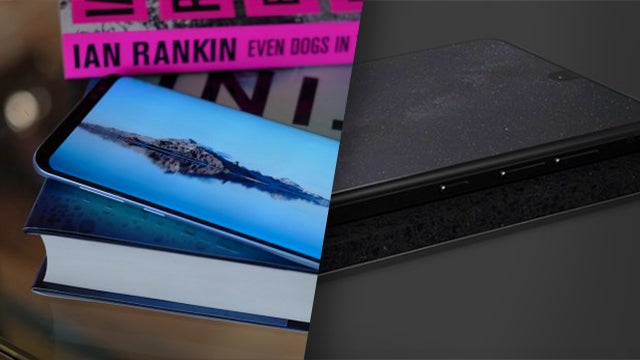
Essential Phone vs Galaxy S8: Can Andy Rubin’s new phone possibly take on the mighty Galaxy S8 and win? We take a closer look at how the two Android phones compare and size up the key specs.
Andy Rubin took to the stage at the Code 2017 Conference to launch the new Essential Phone, which certainly looks like an impressive handset.
The almost full-face screen, ceramic and titanium build, and top-end hardware make it a real competitor on paper, but should the likes of Samsung and Apple be worried?
Well, we thought we’d have a closer look at how the Essential Phone stacks up against arguably the biggest phone of the moment, Samsung’s Galaxy S8, to see if we can answer that question.
We’re yet to get our hands on the Essential Phone, so it’s too early to say for sure which handset is best, but here’s our early look at how the two compare.
Related: Galaxy S8 vs S8+
Essential Phone vs Samsung Galaxy S8 Design: What’s the difference?
In the Galaxy S8, Samsung introduced what might be the finest looking phone we’ve ever seen. At 8mm thick and weighing just 155g, the Galaxy S8 is certainly a sleek handset, while the 5.8-inch (6.2-inch on the S8+) ‘Infinity Display’ wraps around the sides of the phone.
The 185g Essential Phone has a 5.7-inch edge-to-edge display, and while it doesn’t have the curved edges of the S8, it does push the screen further than Samsung’s rival. That is to say, the display extends to the very top of the phone, almost eliminating the top bezel, whereas the S8 still has a slight bezel at the top and bottom of the front face.
There’s no way to say that one display is ‘better’ than the other, and while the screen on the Essential Phone stretches further than the S8’s, the curved edges on the latter look undeniably cool.
Related: Best Android phones
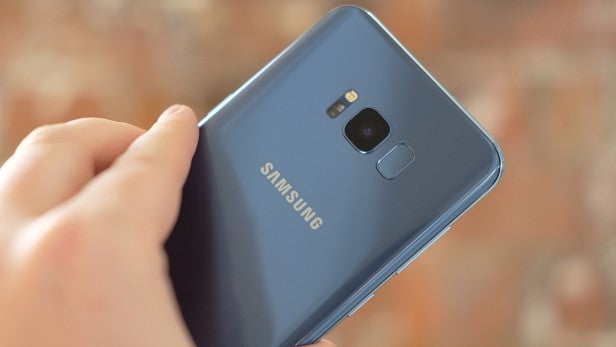 Samsung Galaxy S8
Samsung Galaxy S8
Materials-wise, the Essential Phone’s titanium and ceramic body should, according to Andy Rubin, hold up better in drop tests than the S8’s glass and aluminium body. That said, Samsung does appear to have an edge when it comes to waterproofing, with an IP68 certification on the Galaxy S8 meaning it’s been tested at depths of 1.5 metres for 30 minutes. Thus far, there’s been no mention of such a feature on the Essential Phone.
And if you’re wondering about ports, you’ll either be pleased or dismayed to learn the 3.5mm headphone jack has not been included on the Essential handset – the phone does come with an adapter, though. Samsung has opted to retain the headphone port, which appears alongside a USB Type-C port on the S8 – that’s the same USB port used by Essential.
One trick Essential has up its sleeve is the addition of a magnetic connector on the rear of the device that allows for modules to be attached. At this point the only module is the 360-degree camera, but there will surely be more in the future.
Samsung didn’t opt for any modular design elements on the S8, and for good reason. Modular phones haven’t proved very popular in the past, and Essential is running a risk here. But having the option to make use of add-ons, especially when the phone’s design remains pretty sleek, could just prove to be a plus point for Andy Rubin’s phone in the long run.
The Samsung Galaxy S8 is available in, black, silver, and blue colour options, while the Essential Phone is available in Black Moon, Stellar Grey, Pure White, and Ocean Depths.
Related: What is IP68?
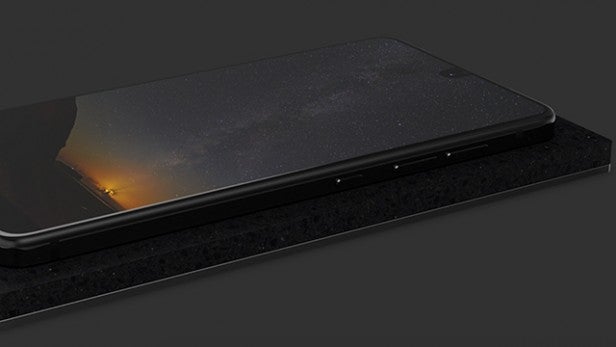 The Essential Phone
The Essential Phone
Essential Phone vs Samsung Galaxy S8 specs: Which phone is more powerful?
We’re yet to test out the Essential Phone, but on paper it matches up to the Galaxy S8. Both phones make use of Qualcomm’s Snapdragon 835 (the S8 comes with Samsung’s own Exynos 8895 in some territories), and pack 4GB of RAM. Essential has managed to outdo Samsung on the internal memory, however, offering 128GB as opposed to the S8’s 64GB. However, Samsung has included a MicroSD card slot, so you’ll be able to expand the memory beyond the Essential Phone’s 128GB.
The South Korean firm has also managed to include a slightly larger 5.8-inch display (or 6.2-inches with the Galaxy S8+) than the Essential Phone’s 5.7-inch offering. The S8’s 2960 x 1440 resolution makes for an incredibly sharp image which shouldn’t mean you’re noticing individual pixels, especially considering the impressive 567 pixel-per-inch (ppi) density. The S8 also makes use of AMOLED tech, too, so colours will be vibrant and blacks noticeably deeper than on an LCD display.
Over on the Essential Phone, you’ll find a similarly impressive 2560 x 1312 screen with a 504 ppi density. It’s not quite as pixel packed as the S8’s display, but it should be plenty sharp.
Related: Essential Home
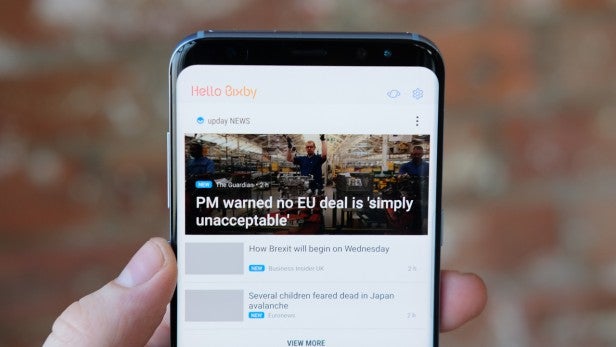 Samsung Galaxy S8
Samsung Galaxy S8
On the rear of the Galaxy S8 you’ll find a 12-megapixel sensor with optical image stabilisation (OIS), and a wide f1/.7 aperture. The same dual pixels that appeared on last year’s Galaxy S7 are also present this time around, so you’ll get great low-light performance on the Samsung handset.
The Essential Phone could potentially give the S8’s shooter a run for its money, as it comes with two 13-megapixel lenses, one of which is monochrome. That means it will take in more light than a traditional sensor, which should result in impressive overall low-light performance. We’re yet to test it out however, so stay tuned.
Samsung has packed a 3000mAh cell inside the Galaxy S8, which means you’ll get a day’s usage depending on how much you use your phone. The 3040mAh battery in the Essential Phone should offer similar performance, but again, we’re yet to test it out in full.
Related: Galaxy S8 vs Galaxy S7
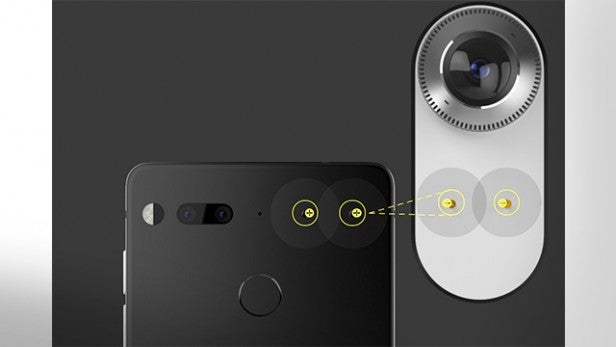
One thing Samsung does have over its new rival is wireless charging, which doesn’t appear on the Essential Phone.
For a full spec comparison, check out the table below.
| Samsung Galaxy S8 | Essential Phone | |
|---|---|---|
| Screen | 5.8 inches (Super AMOLED) | 5.7 inches |
| Display Resolution | 2960 x 1440 (567ppi) | 2560 x 1312 (504ppi) |
| Aspect Ratio | 18.5:9 | 19:10 |
| Primary Camera | 12 megapixels | f/1.7 | OIS | 2x 13 megapixels (one monochrome) | f/1.85 |
| Secondary Camera | 8 megapixels | f/1.7 | AF | 8 megapixels | f/2.2 |
| Chipset | Snapdragon 835 (10nm) or Exynos 8995 (10nm) | Qualcomm Snapdragon 835 |
| RAM | 4GB | 4GB |
| Storage | 64GB | 128GB |
| Battery Capacity | 3000mAh | 3040mAh |
| Waterproof? | Yes (IP68 certified) | No |
| Fingerprint Scanner? | Yes | Yes |
| Headphone Jack? | Yes | No (adapter included) |
| Primary Port | USB Type C | USB Type C |
| Iris Scanner? | Yes | No |
| Wireless Charging? | Yes | No |
| Micro SD Slot? | Yes | No |
| Dimensions | 148.9 x 68.1 x 8.0mm | 141.5 x 71.1 x 7.8mm |
| Weight | 155 grams | 185 grams |
| Software | Android 7.0 Nougat | Android 7.0 Nougat |
Essential Phone vs Samsung Galaxy S8 software: What’s running on these phones?
Both Samsung and Essential’s handsets run Android 7.0 Nougat, but Essential may just have the edge in this department. That’s thanks to the fact the company is promising an untouched version of Nougat, with no bloatware, on its phone.
In fairness, Samsung has improved its Android skin to make the S8 a pleasure to use, so it’s not a big deal that you’re not getting an unskinned version of Google’s OS on the S8. TouchWiz’s childish icons and intrusive additions are long gone, making the S8’s OS powerful and slick.
But there’s no beating an untouched version of Google’s mobile OS, so if Essential delivers the goods, the company will have a persuasive selling point to market its new phone. It also means that the Essential Phone will likely get future version of Android, including Android O, quicker than many of its rivals.
Related: Best Android apps
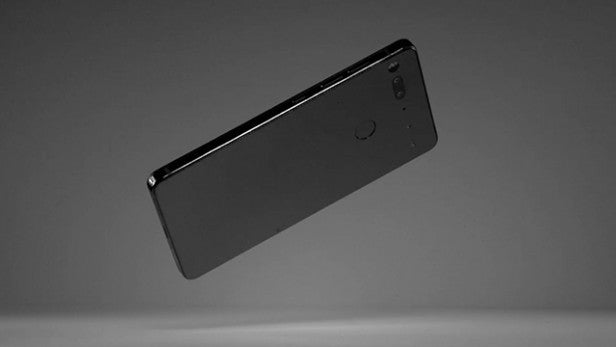
Essential Phone vs Samsung Galaxy S8 price: Which phone is better value for money?
Samsung’s confirmed the Galaxy S8 is available now for £689, while the S8+ is currently going for £779. That’s a lot of money, but it’s in line with what you’d expect to pay for a top-end flagship device in 2017.
Unfortunately, the Essential Phone will only be available in the US at first, where it’ll cost $699 (about £545). An exact shipping date hasn’t been offered, but Andy Rubin said pre-orders should start going out in the next 30-days, meaning it’ll be out in the wild by the end of June.
Related: Best smartphone
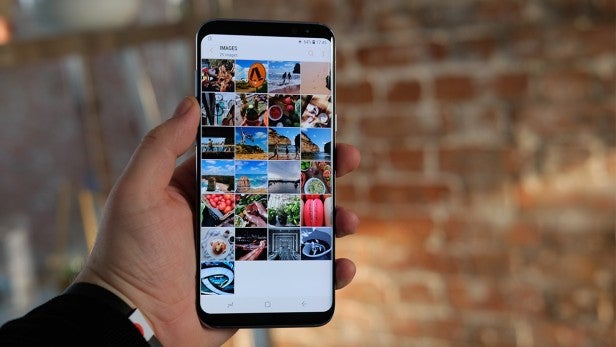 Samsung Galaxy S8
Samsung Galaxy S8
Essential Phone vs Samsung Galaxy S8 Summary: What’s the difference?
Here’s a short breakdown of the key differences between the Samsung Galaxy S8 and the Essential Phone (PH-1).
Design: Samsung’s usually got its competitors beat in this department, and will probably still come out on top when compared to the Essential Phone. Still, the latter’s almost full-face screen and titanium/ceramic build could give the S8’s curved edge screen, glass body, and lack of a home button some trouble.
Specs: The two phones are pretty evenly matched, with both using a Snapdragon 835 processor, 4GB of RAM, and generally looking to be speedy devices. The S8 does come with a few extras such as a MicroSD card slot and wireless charging, however.
Price: Samsung wants £689 for the S8, while the S8+ will run you £779. And while the $699 price tag on the Essential Phone is cheaper, the handset won’t be launching outside of the US for now.
Value: This one’s hard to call. We are yet to review the Essential Phone, but it’s certainly cheaper than the S8, and comes with almost as many features. Still, the S8 packs in extra offerings such as wireless charging and waterproofing for not all that much more cash. And given the uncertainty surrounding the Essential Phone’s global availability, if you need a premium Android handset in your pocket right now, it’s the Galaxy S8 you’ll want to plump for.
Let us know whether you’d buy an Essential Phone over an S8 in the comments.

